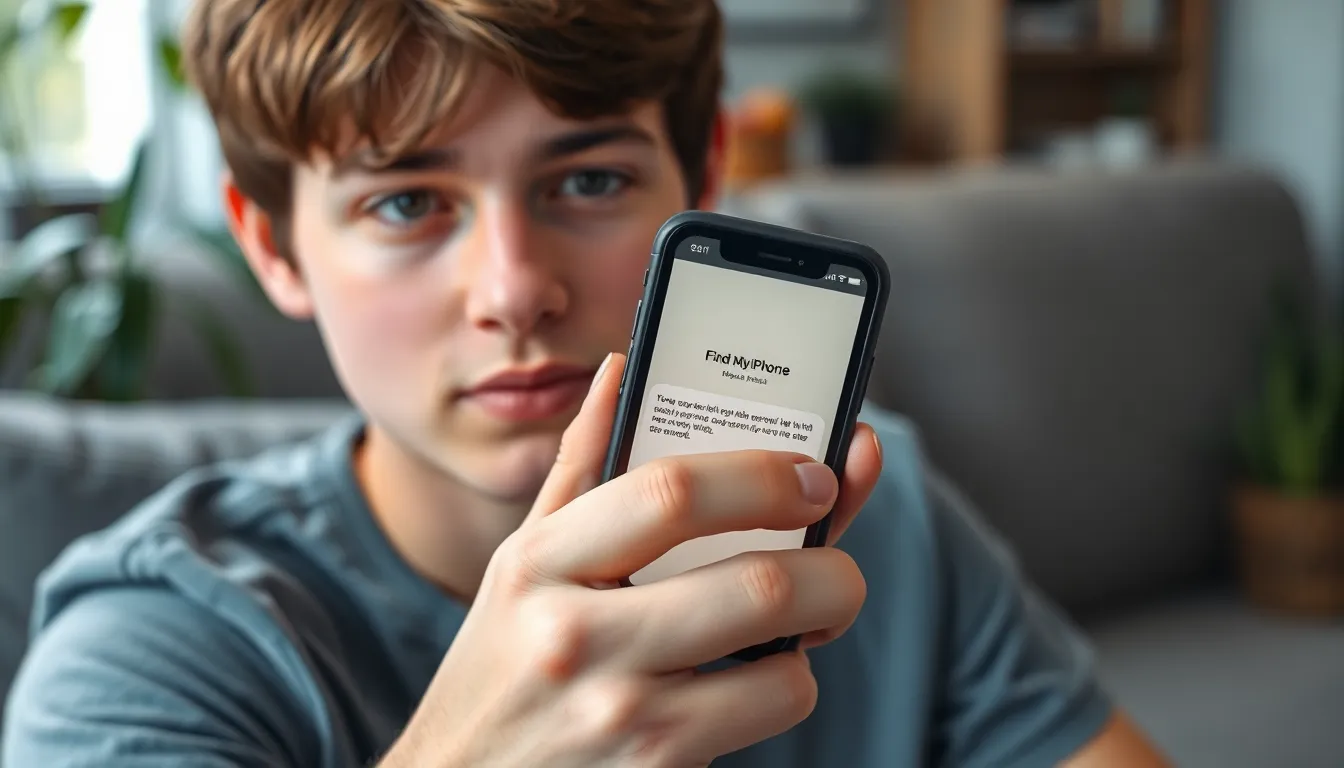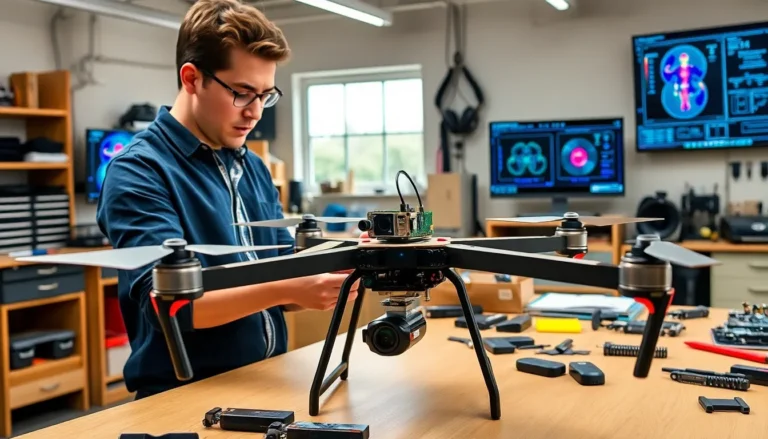Table of Contents
ToggleLosing an iPhone can feel like losing a limb. Panic sets in as the reality hits: all those memes, selfies, and precious cat videos might be gone forever. But when the “Find My iPhone” feature decides to play hide-and-seek too, frustration levels skyrocket. It’s like your phone’s in on the joke and having a laugh at your expense.
So why won’t Find My iPhone work when you need it most? It could be a sneaky setting, a connectivity hiccup, or perhaps your phone is simply playing hard to get. Whatever the reason, understanding the quirks of this feature can save the day. Let’s dive in and uncover the mystery behind those elusive iPhones and get you back in control of your digital life.
Common Reasons Why Find My iPhone Won’t Work
Understanding why “Find My iPhone” malfunctions is essential for effective troubleshooting. Numerous factors might contribute to the feature not functioning as expected.
iCloud Account Issues
Issues with the iCloud account create significant barriers to locating an iPhone. Users must ensure that they’re signed in with the correct Apple ID on the device. If the account lacks the proper settings, “Find My iPhone” won’t operate. Verification of iCloud account status can eliminate confusion. Mistakenly signing out of iCloud can also disable this feature. Regular updates to the account information help maintain functionality.
Device Compatibility
Device compatibility plays a crucial role in accessing “Find My iPhone.” Only Apple devices with iOS 5 or later support this feature. Older devices might not enable tracking capabilities. Users owning a compatible model should check if “Find My iPhone” is activated. Compatibility issues can emerge when trying to locate devices after major software updates. Users must ensure their device is up to date to benefit from improved functionality.
Troubleshooting Steps

To effectively locate a lost iPhone, users can follow key troubleshooting steps. These actions help identify and resolve common issues preventing the “Find My iPhone” feature from functioning correctly.
Check Your Settings
Ensure “Find My iPhone” is activated in the device settings. Navigate to Settings, tap on the user’s name, then select iCloud. Verify that the “Find My iPhone” toggle is turned on. Apple ID correctness is essential, so signing in with the right account matters. Reviewing location services adds another layer. Go to Settings, select Privacy, then Location Services, and confirm that it’s enabled. A thorough check of these settings often resolves connectivity issues.
Restart Your Device
Restarting the device can remedy minor glitches affecting functionality. Press and hold the side button and either volume button until the slider appears. Swipe the slider to power off. After the device shuts down, wait a few seconds and then press the side button to turn it back on. Users report that this simple action often restores the connection needed for “Find My iPhone” to work efficiently. Regularly restarting devices may help maintain optimal performance overall.
Advanced Solutions
Addressing the “Find My iPhone” functionalities involves implementing advanced solutions. Users can take specific steps to enhance their chances of locating their devices effectively.
Update iOS
Keeping iOS updated is fundamental for optimal performance and feature compatibility. Apple frequently releases updates to improve functionality, fix bugs, and enhance security. An outdated version might prevent “Find My iPhone” from working correctly. To check for updates, users should navigate to Settings, select General, and tap Software Update. If an update is available, installing it promptly ensures users benefit from the latest features and security enhancements. Regularly updating iOS also resolves potential conflicts that might emerge from software discrepancies.
Reset Network Settings
Resetting network settings often addresses connectivity issues that hinder “Find My iPhone” functionality. Users encountering persistent problems can go to Settings, select General, then choose Transfer or Reset iPhone. Tapping Reset, followed by Reset Network Settings, will restore all network-related settings to default. This action removes saved Wi-Fi networks and passwords but can improve overall connectivity. After resetting network settings, users should reconnect to their Wi-Fi networks and enable any necessary settings for location services. Prompt resolution of network-related issues promotes seamless operation of the “Find My iPhone” feature.
Additional Tips
Consider alternative methods for locating a lost iPhone if “Find My iPhone” isn’t functioning. Use Google Maps Timeline to track device movements, as it provides location history if location services remained active. Reach out to friends or family who may have a similar device. Their nearby iPhones can potentially help pinpoint the iPhone’s last known location through Bluetooth proximity.
Explore third-party apps designed for tracking lost devices. Some apps offer additional functionalities beyond Apple’s native solutions. Share your Apple ID and location settings with trusted contacts if necessary. They can assist in searching for the lost device using their Apple devices.
Lastly, contact your cellular provider. They may assist in locating the device through their network tools.
Losing an iPhone can be a distressing experience especially when “Find My iPhone” doesn’t work as expected. Understanding potential issues like settings misconfigurations or connectivity problems can empower users to troubleshoot effectively. By ensuring the feature is activated and keeping the device updated users can significantly improve the chances of locating their lost iPhone.
Exploring alternative methods and utilizing available resources can also enhance the search process. With the right knowledge and tools users can regain confidence in managing their devices and minimize the anxiety of losing their valuable technology.







